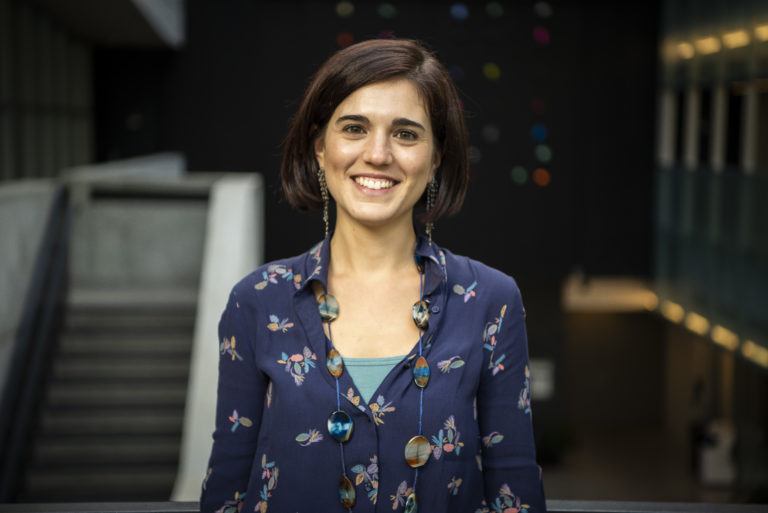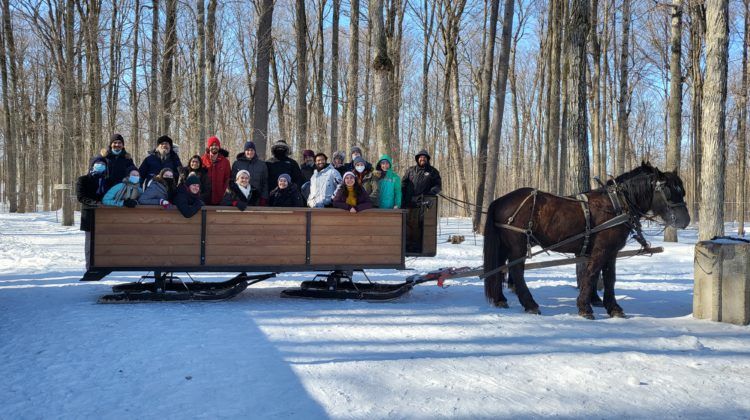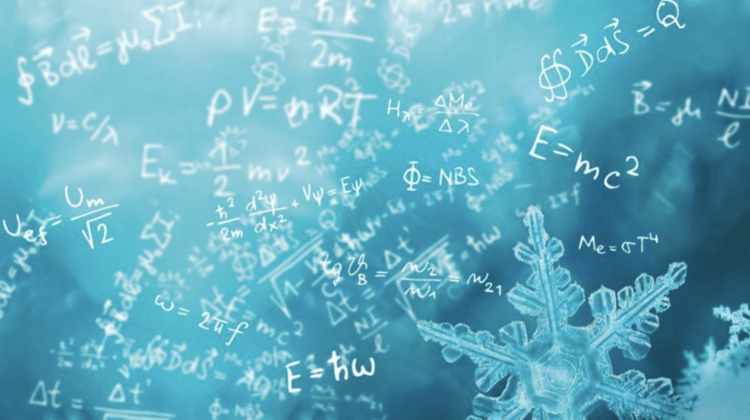Clocks go quantum
In these uncertain times, Perimeter postdoctoral fellow Flaminia Giacomini is introducing more uncertainty about time.

“There is a problem with time.”
That’s how Perimeter postdoctoral researcher Flaminia Giacomini boils down the big idea behind her research.
In fact, Giacomini and colleagues recently discovered that when quantum and gravitational ideas about time are combined, time can become uncertain. Events may not happen at precise times, and the order in which they happen may be in doubt.
It is as if each tick of a clock marks not a sharp point, but an uncertain curve. A moment in time becomes as ambiguous and probabilistic as the location of a quantum particle.
Two views of time
This new work starts where much of modern physics starts: with the rueful recognition that we have not one theory of the universe, but two. There’s the generalization of quantum mechanics, known as quantum theory, and Einstein’s theory of gravity, known as general relativity. They have proven notoriously difficult to combine, in part because they have different underlying ideas. Time is one of them.
Quantum time is actually the simpler of the two: at the quantum level, time ticks reliably along in the background and measuring it simply entails looking at the appropriate clock.
Things are more complicated with relativity.
“In general relativity, time is dynamical,” Giacomini says. That is, in general relativity, a clock is influenced by what’s around it. Specifically, time bends and stretches near objects with mass. As clocks move past such an object, things can get messy, says Giacomini: “You can have different clocks which follow different trajectories, and they can tick differently.”
“When you put these two ideas about time together,” says Giacomini, “there is a problem.”
Time becomes uncertain
Giacomini joined Perimeter Institute in October 2019 as the new Yvonne Choquet-Bruhat Fellow. Previously, as a doctoral student at the University of Vienna, she and her colleagues developed a formalism to describe what happens to physical clocks when they come close to objects whose positions are quantum and uncertain. Their startling conclusion: time itself becomes uncertain.
Their paper recently appeared in the prestigious journal Nature Communications.
Giacomini walks through the team’s thought experiment step by step. First, they considered what would happen if physical clocks were placed in some gravitational field. According to Einstein’s general theory of relativity, a clock will run more slowly if placed next to a massive object, like a planet or a star. “Lower is slower,” says Giacomini. “The closer to the mass, the slower the clock.”
Next, the team layered on the quantum perspective. In quantum theory, a particle can have an uncertain position: until it is measured, it exists not in one position but in a range of possible positions. If a clock were placed next to a massive particle in such an uncertain position, then the ticking of the clock would become uncertain as well.
Add a second clock, and things become truly strange. The clocks will differ not only on what time an event happens, but on whether an event happens at a precise time at all.
Giacomini’s groundbreaking work requires physicists to revise their concept of an ‘event’ as something that happens at a precise point in time. Her work stretches standard ideas to include events that cannot be – to use the technical term – ‘localized in time.’
The implications of this thought experiment challenge foundational ideas about the flow of time and causality. The tick of one clock can happen both before and after the tick of another. Events can no longer be definitively ordered.
Reference frames
At Perimeter, Giacomini plans to explore how factoring in the observer’s frame of reference might help resolve or further illuminate the apparent uncertainty of time.
A reference frame tells you, say, whether you are on a fast-moving spaceship with a clock or watching the spaceship go by. In general relativity, it’s always possible to ignore the bending of spacetime if you pick the right local reference frame. The Vienna team discovered that with the right reference frame, time can once again appear precise.
In Vienna, Giacomini worked to develop the formalism for jumping into and out of such reference frames – made tricky because the relationships between different quantum reference frames can also create uncertainty. At Perimeter, Giacomini is pushing these difficult ideas even further. She wants to build these reference frames into “a superposition of spacetimes,” she says. In other words, she envisions a reference frame that is both here and there, both before and after.
It’s a challenging project, but one with big rewards.
“We quickly arrive at very deep questions about the nature of the world that we live in,” she says.
It’s just one of several projects she’s pursuing. “Probably too many,” she says. “My research lies at the interface of different fields: there is a bit of quantum foundations, a bit of relativistic quantum information, a bit of general relativity.”
The mix means Giacomini fits right in at Perimeter.
“I like the fact that Perimeter is very interdisciplinary,” she says. “This is one of the things that I enjoy the most, but which is at times problematic in my research line. I like the fact that here I interact with people from different backgrounds and develop my own research further by enriching it with different expertise from so many people. I like it very much.”
Read more: Quantum times: When did the cuckoo sing? (University of Vienna)
Dive deeper: Quantum clocks and the temporal localisability of events in the presence of gravitating quantum systems (Nature Communications)
Explore: Perimeter researcher Lucien Hardy’s take on the uncertainty surrounding time in quantum gravity






















































































